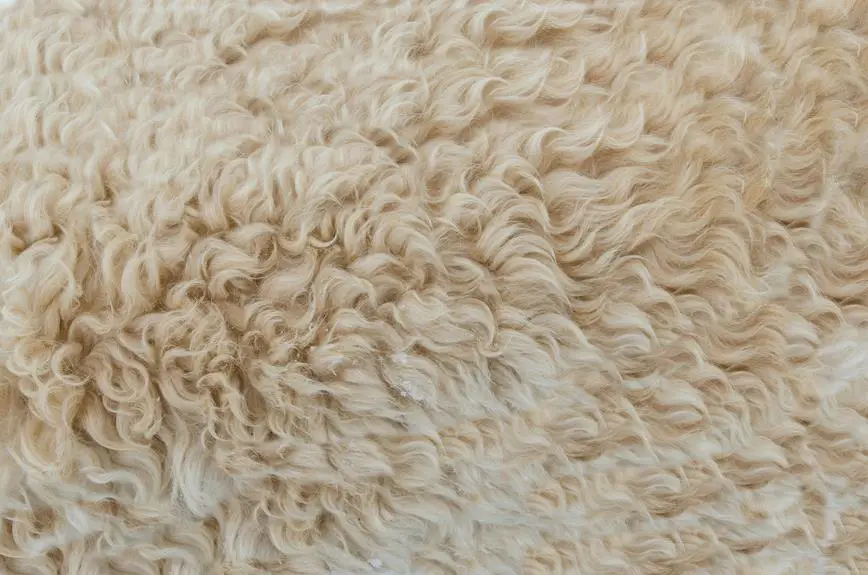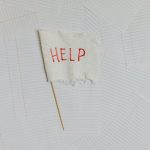You might have come across voile fabric in various settings, but do you really know what it is? This lightweight, sheer textile has roots in early 19th century France and serves multiple purposes, from fashion to home decor. Its soft texture and breathability make it a desirable choice for many projects. However, understanding its unique characteristics and potential applications can elevate your choices. Curious about how this versatile fabric can fit into your style or decor? There's much more to explore about voile that could surprise you.
Table of Contents
History of Voile Fabric
Have you ever wondered how voile fabric, with its delicate and airy qualities, came to be? You might be surprised to learn that voile has roots dating back to the early 19th century in France. The name 'voile' actually comes from the French word for 'veil,' reflecting its lightweight nature. Initially, it was made from silk, giving it a luxurious feel and making it popular among the upper classes.
As the 20th century approached, manufacturers started blending cotton into the fabric, making it more accessible and versatile. This shift allowed voile to move beyond high fashion, finding its way into everyday clothing and home textiles. During the 1920s and 1930s, it became a favorite for women's dresses and curtains, celebrated for its ability to filter light while offering a hint of privacy.
Today, you'll find voile in various forms, often made with synthetic fibers that enhance its durability and ease of care. As you explore the history of voile, it's fascinating to see how it evolved from a luxury item to a staple in many wardrobes and homes, retaining its charm and delicate essence throughout the years.
Characteristics of Voile
Voile fabric is known for its lightweight, sheer quality that drapes beautifully and allows light to filter through while providing a touch of privacy. This fabric's softness makes it a popular choice for curtains, blouses, and dresses. When you touch voile, you'll notice its smooth texture, which adds a delicate feel to any garment or home decor item.
One of the standout characteristics of voile is its versatility. You can easily layer it with other fabrics to create depth in your designs. Its breathable nature makes it ideal for warmer climates, as it allows air to circulate. Plus, voile's fine weave helps it maintain its shape, making it easy to work with for sewing projects.
Another notable feature is its color retention. Voile takes dyes well, resulting in vibrant colors that won't easily fade. Additionally, it's relatively easy to care for; you can machine wash it on a gentle cycle and tumble dry on low.
Types of Voile
When you explore the different types of voile, you'll notice that cotton and silk varieties each offer unique characteristics and benefits.
Cotton voile is lightweight and breathable, making it perfect for warm weather.
On the other hand, silk voile adds a touch of luxury and elegance to any project you have in mind.
Cotton Voile Characteristics
Cotton voile features a lightweight, sheer texture that makes it perfect for layering in various fashion and home decor applications. When you touch cotton voile, you'll notice its soft feel, which adds a gentle drape to your garments or curtains. This fabric breathes well, making it ideal for warm weather clothing, like blouses, dresses, and skirts.
You'll also appreciate that cotton voile is versatile; it comes in various colors and prints, allowing you to express your style easily. Since it's made from natural fibers, it's a great choice for those who prefer eco-friendly materials.
One of the standout characteristics of cotton voile is its durability. While it's lightweight, it can withstand regular wear and washing without losing its charm. However, you should be cautious when washing it—gentle cycles and cool water are recommended to maintain its integrity.
In terms of care, cotton voile can wrinkle easily, but a quick iron or steamer will restore its smooth finish. Overall, cotton voile offers a blend of beauty and functionality, making it a favored choice for both fashion and home decor enthusiasts.
Silk Voile Benefits
Silk voile offers a luxurious alternative to cotton voile, boasting an exquisite sheen and a soft, flowing drape that enhances any garment or decor item. When you choose silk voile, you're opting for elegance and sophistication. Its lightweight nature makes it perfect for layering, allowing you to create beautiful, airy outfits or delicate window treatments.
One of the main benefits of silk voile is its breathability. It keeps you cool in warm weather, making it an ideal choice for summer dresses or light blouses. Plus, the natural fibers of silk have moisture-wicking properties, which help you stay dry and comfortable.
Silk voile's vibrant colors and prints are another reason to love it. The fabric absorbs dye exceptionally well, resulting in rich, deep hues that won't fade easily. This makes it perfect for those eye-catching fashion pieces or stunning home textiles.
Lastly, silk voile's durability shouldn't be overlooked. While it feels delicate, it's surprisingly strong, allowing you to enjoy your creations for years.
Common Uses of Voile
Voile's lightness and transparency make it a popular choice for creating elegant curtains and delicate apparel. When you want to add a soft, airy feel to your home, consider using voile for window treatments. Its sheer quality allows natural light to filter through while maintaining some privacy. You can easily layer it with heavier fabrics for a more dynamic look.
In the realm of fashion, voile is often used in dresses, blouses, and skirts. Its lightweight nature gives garments a flowing, feminine silhouette that's perfect for warm weather. You'll find that it drapes beautifully, making it an excellent choice for layering or creating flowing designs.
Voile is also used in crafting, particularly in projects that require a delicate touch. Whether you're making lightweight bags, decorative accents, or even bridal accessories, this fabric can add an ethereal quality to your creations.
Additionally, voile's versatility allows you to use it in home décor projects, such as table runners or decorative accents, enhancing your space with a touch of elegance. Overall, voile's charm and functionality make it a go-to fabric for various applications.
Care and Maintenance
Taking care of your voile fabric is essential to keep it looking its best.
You'll want to know the proper washing instructions, drying tips, and ironing guidelines to maintain its delicate texture.
Let's explore these important points to ensure your voile stays vibrant and beautiful for years to come.
Washing Instructions
To keep your voile fabric looking its best, wash it gently in cold water with a mild detergent. Avoid using bleach or harsh chemicals, as they can damage the delicate fibers. When you're ready to wash, turn the fabric inside out to protect its surface and color. If your voile is part of a garment, check the care label for any specific instructions.
You can choose to hand wash or use a gentle cycle on your washing machine. If you opt for hand washing, immerse the fabric in cold water and gently agitate it. Rinse thoroughly until the water runs clear, ensuring no detergent residue remains. If you're using a machine, select a delicate cycle with a slow spin to prevent any stretching or distortion.
After washing, never wring or twist the fabric to remove excess water, as this can cause permanent damage. Instead, gently press the fabric between two clean towels to absorb moisture. Always handle your voile fabric with care throughout the washing process to maintain its softness and drape.
Following these washing instructions will help keep your voile looking fresh and vibrant for years to come.
Drying Tips
When it comes to drying your voile fabric, air drying is the best method to maintain its delicate texture and prevent shrinkage. You'll want to hang your fabric in a shaded area, away from direct sunlight, as it can fade the colors and weaken the fibers. Ensure it's spread out evenly to avoid creases and wrinkles. If you're short on space, you can also lay the fabric flat on a clean, dry towel to absorb moisture.
Here's a quick reference table to help you with drying your voile fabric:
| Drying Method | Pros | Cons |
|---|---|---|
| Air Drying | Preserves texture, no shrinkage | Takes longer to dry |
| Tumble Drying | Quick drying | Risk of shrinkage, damage |
| Flat Drying | Reduces wrinkles | Requires more space |
Always check the care label for specific instructions. If you follow these tips, you'll keep your voile fabric looking beautiful for a long time!
Ironing Guidelines
Ironing voile fabric requires a gentle touch to maintain its delicate nature and prevent damage. Start by setting your iron to a low heat setting, ideally around the synthetic or silk option. Before you begin, it's a good idea to check the care label for specific instructions, as some voile fabrics may have particular requirements.
To protect the fabric, consider placing a thin cotton cloth or pressing cloth over it while ironing. This extra layer helps shield the voile from direct heat, reducing the risk of scorching or shiny spots. Iron the fabric while it's slightly damp for the best results, as this helps remove wrinkles more efficiently. If the fabric is dry, you can lightly mist it with water from a spray bottle.
Work in small sections, using smooth, even strokes. Avoid leaving the iron in one place for too long to prevent overheating. If you notice stubborn wrinkles, adjust the steam setting, but be cautious not to oversaturate the fabric.
Once you've finished, hang the voile or lay it flat to cool, ensuring it retains its crisp appearance. Following these guidelines will keep your voile looking beautiful and fresh.
Voile in Fashion
Voile fabric has become a popular choice in fashion due to its lightweight, airy nature, making it perfect for both casual and elegant styles.
You'll love how it drapes effortlessly, creating soft silhouettes that flatter your figure. Designed for comfort, voile is breathable, allowing you to stay cool even on those warm summer days.
Consider these reasons why incorporating voile into your wardrobe can elevate your style:
- Versatile Looks: Whether you're dressing up for a night out or keeping it casual for a day at the park, voile works for every occasion.
- Feminine Touch: The delicate texture and gentle flow of voile add a soft, romantic vibe to your outfits, making you feel effortlessly chic.
Embrace voile fabric in your clothing choices, and you'll find it's an essential addition that enhances your wardrobe.
From flowing skirts to airy blouses, you can create stunning ensembles that make you feel confident and stylish.
Voile in Home Decor
Incorporating voile into your home decor can bring the same lightness and elegance that it offers in fashion, transforming your living space into a serene and inviting environment. This versatile fabric is perfect for creating airy curtains that let in natural light while maintaining privacy. You can easily drape voile over windows to soften harsh sunlight, creating a cozy atmosphere.
Voile's delicate texture adds a touch of sophistication, making it ideal for accent pieces like throw pillows and table runners. Choose soft, muted colors or subtle patterns to complement your existing decor, or go bold with vibrant hues to create a statement.
You can also use voile for DIY projects, such as wrapping around decorative vases or creating whimsical wall hangings. This fabric's lightweight nature makes it easy to manipulate, allowing you to express your creativity.
For a layered look, combine voile with heavier fabrics like linen or cotton. This contrast not only adds depth to your decor but also enhances the overall aesthetic. Embrace the charm of voile, and watch your home transform into a more inviting and stylish haven.
Frequently Asked Questions
Is Voile Fabric Suitable for Outdoor Use?
Voile fabric isn't ideal for outdoor use due to its lightweight and delicate nature. It can fade quickly in sunlight and doesn't withstand moisture well, so you might want to consider more durable options for outdoor settings.
Can Voile Be Dyed Easily?
Yes, you can dye voile easily. Just make sure to use fabric dye suitable for lightweight materials. Pre-washing the fabric helps the dye absorb better, ensuring vibrant and even color results for your projects.
What Is the Weight of Standard Voile Fabric?
The weight of standard voile fabric typically ranges between 40 to 60 grams per square meter. You'll find this lightweight material perfect for breezy garments, curtains, or any project that needs a delicate touch.
Is Voile Fabric Eco-Friendly?
Yes, voile fabric can be eco-friendly, especially if it's made from natural fibers like cotton or linen. You should always check the sourcing and production processes to ensure it meets your sustainability standards.
How Does Voile Compare to Chiffon?
Voile and chiffon both offer lightweight, airy qualities, but voile's slightly crisper texture gives it more structure. You'll find chiffon is softer and more flowy, making it ideal for draping and elegant silhouettes.
- Why Open-Weave Scrim Is the Secret to Stunning Event and Canopy Designs - June 26, 2025
- Creating Large-Scale Art Installations With Scrim Fabric - June 26, 2025
- Scrim Fabric in Upholstery: Understanding Its Use as a Backing Material - June 26, 2025







